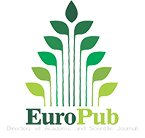Advanced Material-Driven Sensing and Remediation Strategies for Water Pollutants

Special Issue Information
Dear Colleagues,
Water plays a central role in sustaining ecological systems and human civilization. However, rapid industrialization, urban expansion, and population growth are placing unprecedented strain on both the availability and quality of water resources. Increasing anthropogenic activities have led to the accumulation of diverse contaminants, including toxic metals, persistent organic compounds, industrial chemicals, dyes, and pathogenic microorganisms. The presence of these pollutants poses significant risks to aquatic life, environmental balance, and human health.
To address these challenges, there is an urgent need for rapid, cost-effective, and reliable sensing methodologies capable of identifying hazardous contaminants at trace levels. Such technological advances not only enable early detection but also guide timely implementation of treatment and remediation measures. In the realm of chemical engineering, the integration of advanced functional materials into sensing platforms offers a promising pathway toward efficient monitoring and water purification solutions.
Optofluidic sensing systems, for example, leverage the inherent interaction between light and liquid media, providing high sensitivity, ultra-low detection limits, and the capability to distinguish multiple contaminants simultaneously. These systems can facilitate real-time and continuous monitoring of water quality, which is critical for early warning and prevention in industrial, municipal, and environmental contexts.
This Special Issue aims to highlight recent progress in material-assisted, multimodal sensor technologies designed for the detection and remediation of diverse waterborne pollutants. We invite contributions that showcase innovative chemical engineering approaches spanning materials design, device fabrication, system integration, and practical implementation. Potential topics include, but are not limited to:
· Photonic bandgap and photonic crystal materials for pollutant detection
· Microfluidic and nanofluidic sensing platforms
· Remote, IoT-enabled, and wireless sensor networks for distributed water monitoring
· Spectroscopic and microscopic techniques for water analysis
· Two-dimensional and layered materials for chemical sensing
· Hybrid photonic and chemical platforms
· Acousto-optic and optical-interference-based sensing methods
· Plasmonic and metamaterial-enhanced sensing devices
· Nanoscale sensors, including nanopores, nanowires, and surface-functionalized nanomaterials
· Machine learning and deep learning-assisted analytical techniques for rapid pollutant classification and quantification
Through this collection, we aim to bridge the gap between innovative materials research and practical chemical engineering applications, fostering solutions that enable real-time diagnosis, targeted remediation, and sustainable management of water resources.
We welcome a diversity of articles, such as conceptual and empirical articles, reviews, critical comments, and meta-analyses, for submission to this Special Issue. We will accept manuscripts from different disciplines, addressing topics related to the scope.
Prof. Dr. Rajib Biswas
Guest Editors









